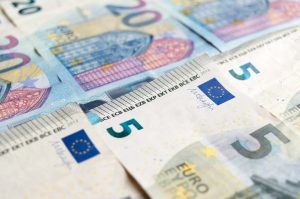The forex market, also known as the foreign exchange market, is the world’s largest and most liquid financial market. It facilitates the exchange of currencies between countries, allowing businesses and individuals to conduct international commerce and investment. The forex market operates 24 hours a day, five days a week, and trades an average of $6.6 trillion per day.
The forex market is decentralized, meaning there is no central exchange or clearinghouse. Instead, it consists of a network of banks, brokers, and other financial institutions that trade currencies electronically. This allows for a high degree of liquidity and flexibility, as traders can enter and exit positions quickly and easily.
So, how much money moves in and out of the forex market every day? According to the Bank for International Settlements (BIS), the average daily turnover in the forex market was $6.6 trillion in April 2019. This represents a 29% increase from the last BIS survey in 2016, which reported a daily turnover of $5.1 trillion.
The vast majority of forex trading is conducted by institutional investors, such as banks and hedge funds. These players account for around 90% of the daily turnover in the forex market. Retail traders, on the other hand, make up only a small fraction of the market.
The most traded currency in the forex market is the US dollar, which is involved in 88% of all transactions. The euro is the second most traded currency, with a share of 32%. Other popular currencies include the Japanese yen, British pound, and Swiss franc.
The forex market is highly volatile, meaning that exchange rates can fluctuate rapidly in response to economic, political, and other factors. This creates opportunities for traders to profit from the movements in currency prices. However, it also carries significant risks, as traders can lose money just as quickly as they can make it.
To manage these risks, traders use a variety of tools and strategies, such as stop-loss orders, hedging, and technical analysis. They also closely monitor economic indicators, such as interest rates, inflation, and GDP, to anticipate changes in currency prices.
In conclusion, the forex market is a massive and complex financial market that facilitates global trade and investment. It trades an average of $6.6 trillion per day, and is dominated by institutional investors. While it offers opportunities for profit, it also carries significant risks, and requires careful management and analysis. As the global economy continues to evolve, the forex market will remain a critical component of international finance.






